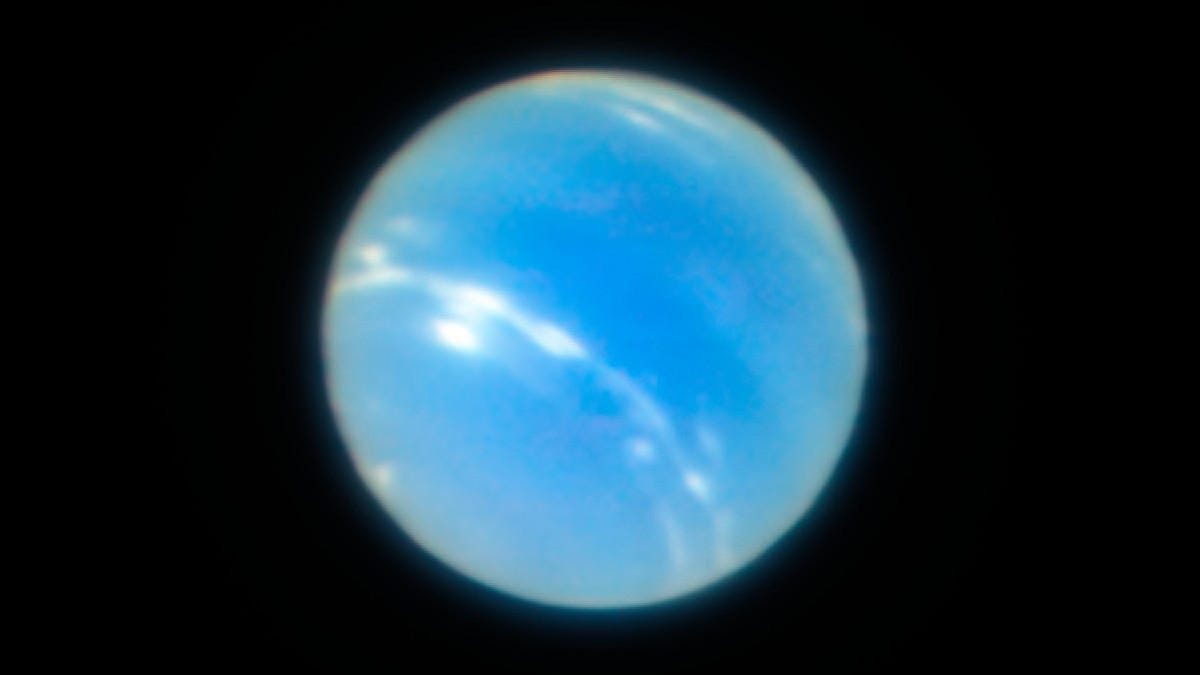Neptune looks beautifully blue in sharp new telescope image
The upgraded Very Large Telescope snapped a fetching portrait of distant Neptune.
At its farthest, Neptune is nearly several billion miles (4.7 billion kilometers) away from Earth. Some of our best ever images came from NASA's Voyager 2 spacecraft back in 1989, but we now have a fresh view of the azure planet to enjoy.
The European Southern Observatory's ground-based Very Large Telescope (VLT) in Chile got an upgrade that lets it rival and even exceed the imaging efforts of NASA's orbiting Hubble Space Telescope. The VLT turned its eyes to Neptune and some star clusters to test out its new capabilities.
The VLT's new adaptive optics technique uses lasers projected into the sky to help the telescope "correct for turbulence at different altitudes in the atmosphere." That turbulence can make distant objects in space appear blurred.
The new method delivers sharper and more detailed images, as seen in a comparison showing Neptune with the use of the adaptive optics and then the gas giant without, which makes the planet look like a vague and fuzzy blue ball.
The Neptune image on the right is without the adaptive optics system in operation and the one on the left after the adaptive optics are switched on.
There's a good reason scientists are excited about the VLT's new skills.
"It will enable astronomers to study in unprecedented detail fascinating objects such as supermassive black holes at the centers of distant galaxies, jets from young stars, globular clusters, supernovae, planets and their satellites in the solar system and much more," says the ESO.


